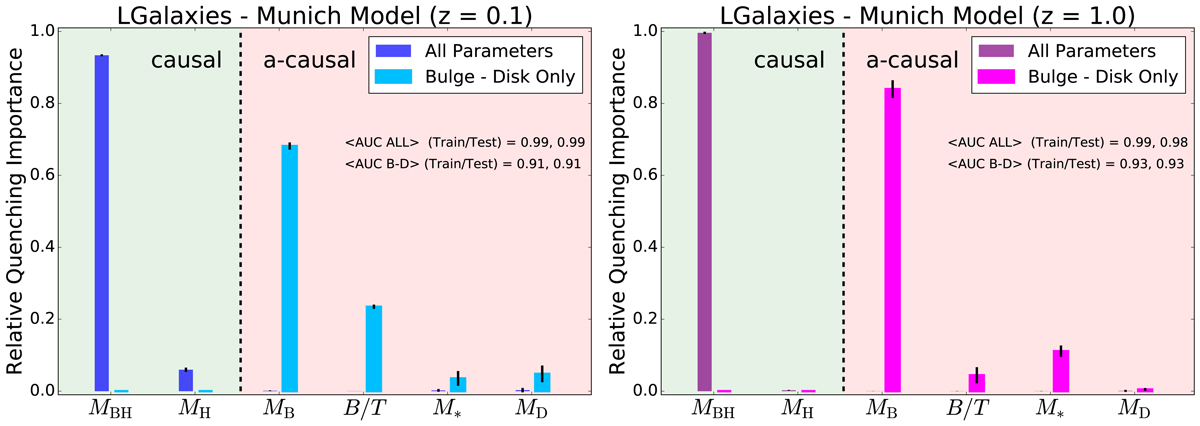Fig. 3.

Download original image
Random Forest classification analysis to predict the quenching of central galaxies in the LGalaxies semi-analytic model. Left panel: results from the z = 0.1 snapshot (shown in blue colours) and right panel: results from the z = 1.0 snapshot (shown in purple colours). Results are shown separately for the bulge–disk parameter set (i.e. MB, MD, M* and B/T) and for this set plus black hole mass (MBH) and dark matter halo mass (MH), as indicated on the legends. Quenched galaxies are defined in training to be forming stars at least an order of magnitude below the main sequence. The AUC for training and testing is shown on each panel for each data set. Errors on the relative importances are given as 5 × the dispersion across ten independent training and testing runs. Coloured shading on the plots indicates which parameters are known mathematically to be causal or a causal for quenching. For the full parameter set, it is absolutely clear that MBH is ultimately the most important parameter, and essentially no importance is given to any other parameter (except at a very low level with MH at low redshifts). This is expected in the model since LGalaxies quenches centrals exclusively through preventative AGN feedback. Hence, our RF classifier correctly extracts the causation in the LGalaxies model. In the absence of MBH and MH, bulge mass is clearly found to be the most important parameter governing quenching at both redshifts, which may be interpreted as a key prediction of the model in the a causal bulge–disk parameter space.
Current usage metrics show cumulative count of Article Views (full-text article views including HTML views, PDF and ePub downloads, according to the available data) and Abstracts Views on Vision4Press platform.
Data correspond to usage on the plateform after 2015. The current usage metrics is available 48-96 hours after online publication and is updated daily on week days.
Initial download of the metrics may take a while.


